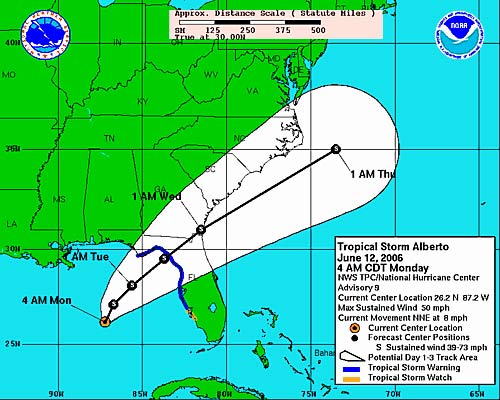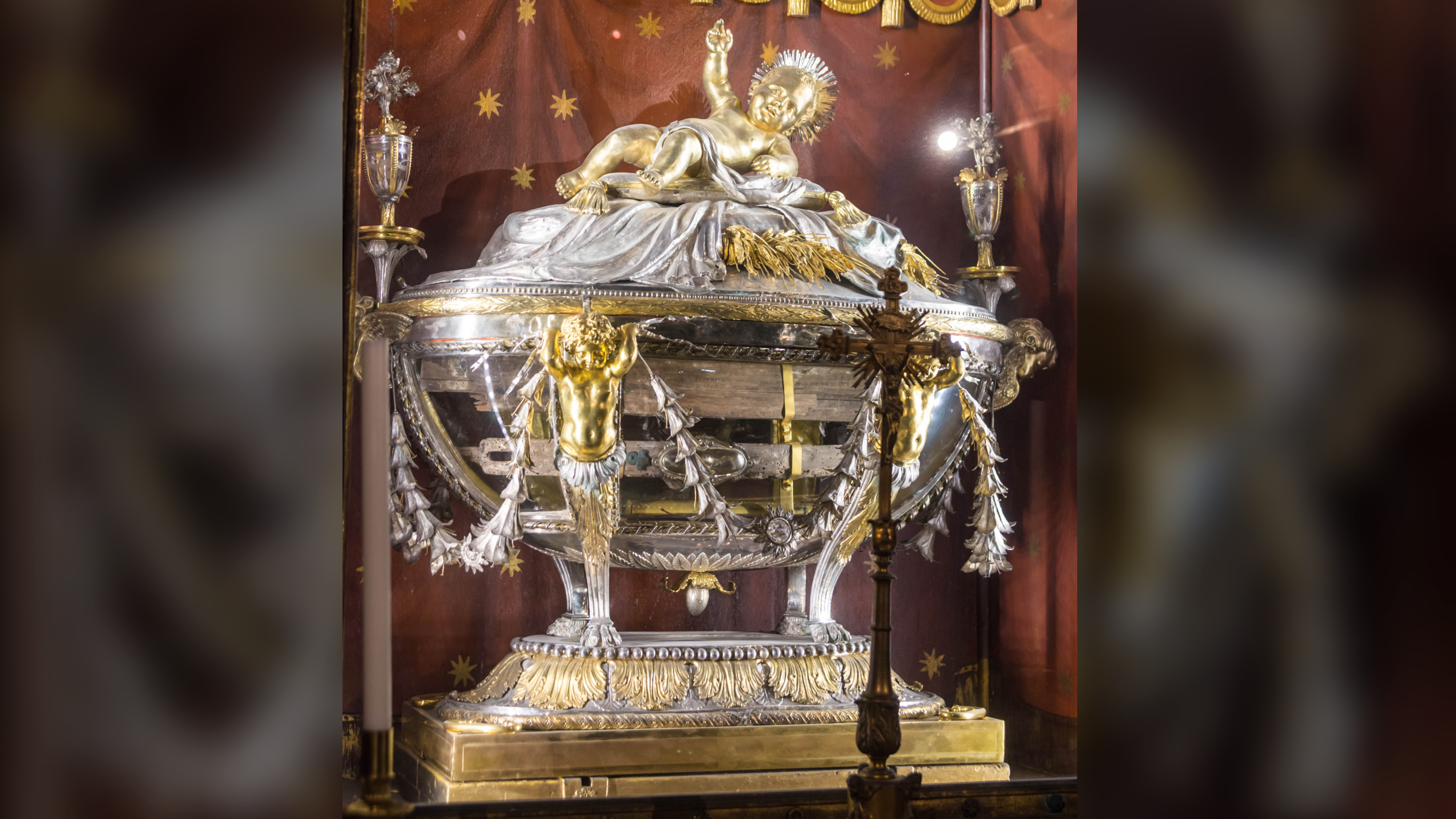Alberto, Season's First Tropical Storm, Causes Little Damage

Updated 3:52 p.m. ET Tuesday, June 13
CEDAR KEY, Florida (AP)—The first tropical storm of the season raked northern Florida with rain and powerful wind gusts Tuesday but did not blow up into a hurricane as forecasters had feared.
A hurricane warning that had been issued for more than 100 miles (160 kilometers) of Florida's gulf coast was downgraded to a tropical storm warning before Alberto made landfall near Adams Beach, southeast of Tallahassee.
The storm's top sustained winds were 50 mph (80 kph), well below the 74 mph (119 kph) threshold for a hurricane.
"The big concern now is going to be shifting to the rainfall and the tornado threat as it moves along the southeastern (U.S.) coast line,'' said National Hurricane Center director Max Mayfield.
A flood watch was issued for southeastern South Carolina, where more than 5 inches (13 centimeters) of rain was possible. Forecasters said parts of Florida and southeastern Georgia could get 4 to 10 inches (10 to 25 centimeters) of rain—welcome news to crews that have been battling wildfires for weeks in several parched Florida counties.
The storm's center came ashore around 12:30 p.m. about 50 miles (80 kilometers) southeast of Tallahassee, the National Hurricane Center said. By 2 p.m., Alberto's top sustained winds were 40 mph (64 kph), barely tropical storm strength.
Get the world’s most fascinating discoveries delivered straight to your inbox.
In nearby Steinhatchee, a small fishing town in the Big Bend, life already appeared to be returning to normal.
"The locals consider this a mosquito breeze,'' said Bruce Tayco, 33, who works at a restaurant. "When it's a tropical storm, we don't even consider it.''
Alberto's wind and rain littered yards with tree limbs, tore off singles and flooded streets, but no major damage was immediately reported. A small construction barge hit the Howard Frankland Bridge in Tampa Bay, but no structural damage was reported.
Statewide, about 21,000 homes and businesses were without power.
Even though Alberto was never expected to become a major storm—it was not until Monday that forecasters thought it might become a hurricane—Florida officials were not taking any chances after last year's deadly hurricane season.
Gov. Jeb Bush signed a declaration of emergency allowing him to call up the National Guard and put laws against price gouging in place if necessary, and evacuation orders were posted for people in mobile homes or low-lying areas in at least five coastal counties.
Alberto also prevented the crew of space shuttle Discovery from flying Monday to the Kennedy Space Center from Houston for several days of dress rehearsals for their expected launch in July.
The tropical depression that produced Alberto formed Saturday, nine days after the June 1 start of the hurricane season.
Scientists say the 2006 season could produce as many as 16 named storms, six of them major hurricanes. Last year's hurricane season was the most destructive on record and the busiest in 154 years of storm tracking, with a record 28 named storms and a record 15 hurricanes.
The Names & Numbers Deadliest, costliest, busiest months, worst states, plus this year's storm names and more.
How & Where Hurricanes Form The science of monster storms.
Hurricanes to Unleash Dormant, Hidden Power Pollution helped thwart storms in the past, but now all bets may be off.


